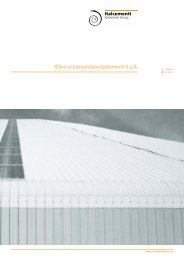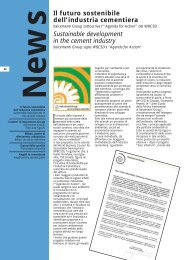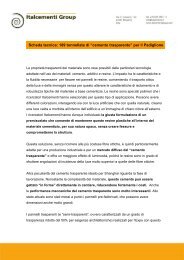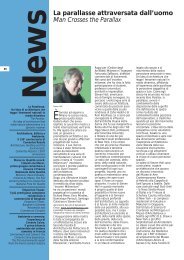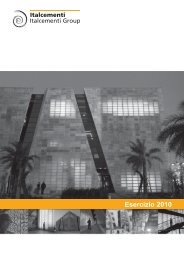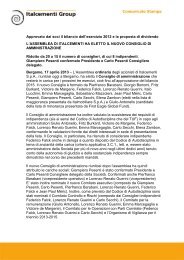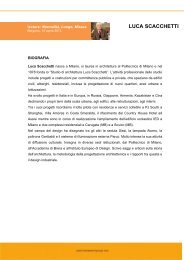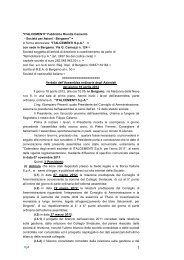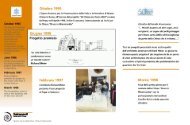Report 2010 - Italcementi Group
Report 2010 - Italcementi Group
Report 2010 - Italcementi Group
You also want an ePaper? Increase the reach of your titles
YUMPU automatically turns print PDFs into web optimized ePapers that Google loves.
Fair value – hierarchy<br />
In determining and documenting the fair value of financial instruments, the <strong>Group</strong> uses the following hierarchy<br />
based on different measurement methods:<br />
level 1: financial instruments with prices quoted on active markets,<br />
level 2: prices quoted on active markets for similar financial instruments, or fair value determined with other<br />
measurement methods where all significant inputs are based on observable market data;<br />
level 3: fair value determined with measurement methods where no significant input is based on observable<br />
market data.<br />
At December 31, <strong>2010</strong>, financial instruments stated at fair value were subdivided as follows:<br />
December 31,<br />
<strong>2010</strong><br />
Level 1 Level 2 Level 3<br />
(in millions of euro)<br />
Mutual funds 128.2 128.2<br />
Derivative instruments - assets 52.5 52.5<br />
Equity investments and financial receivables 11.8 11.8<br />
Other equity investments 200.2 88.3 111.9<br />
Derivative instruments - liabilities 47.6 47.6<br />
Purchase commitments on minority interests 63.7 63.7<br />
Financial risk management policy<br />
The <strong>Group</strong> uses specific financial instruments to hedge the risk of fluctuations in interest rates and exchange<br />
rates in relation to the nature of the debt and international operations.<br />
Interest-rate risk<br />
The <strong>Group</strong> interest-rate risk management policy is designed to minimize the cost of net financial liabilities and<br />
reduce exposure to fluctuation risks. It hedges two types of risk:<br />
1. the risk of variations in the market value of fixed-rate borrowing and lending transactions. <strong>Group</strong> fixed-rate<br />
debt is exposed to an “opportunity cost” risk in the event of a fall in interest rates. A change in interest rates will<br />
affect the market value of fixed-rate assets and liabilities and impact the consolidated result in the event of<br />
liquidation or early repayment of these instruments;<br />
2. the risk linked to future flows arising from floating-rate borrowing and lending transactions. A change in<br />
interest rates will have a negligible impact on the market value of floating-rate financial assets and liabilities but<br />
will affect finance costs and, consequently, future profits.<br />
The <strong>Group</strong> manages this dual risk as part of its general policy, performance targets and risk reduction targets<br />
by giving priority to hedges on future flows over the short- and medium-term and to hedges against the market<br />
value risk over the long term, within the specified limits.<br />
118




